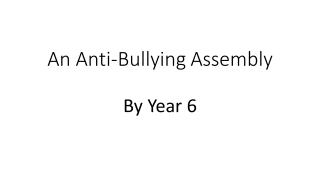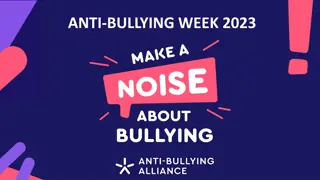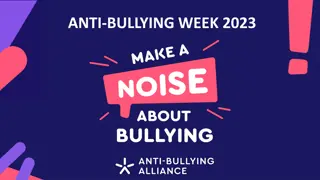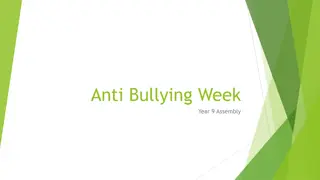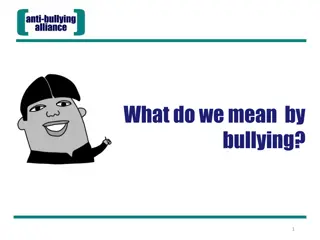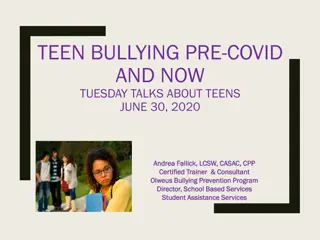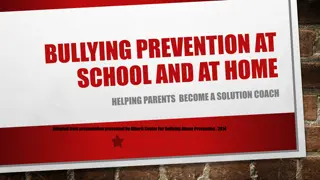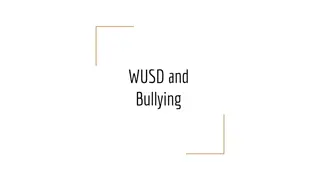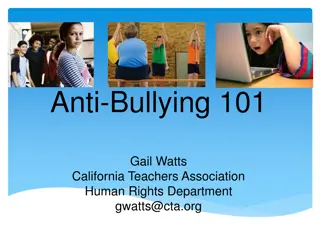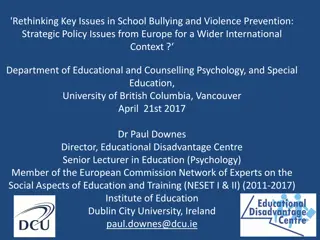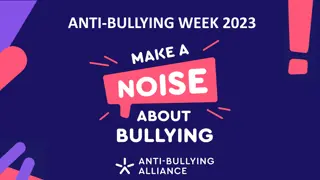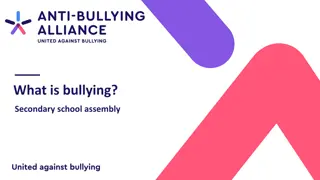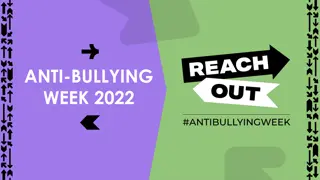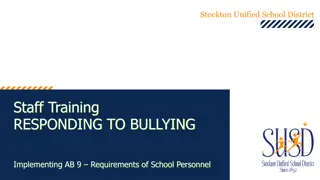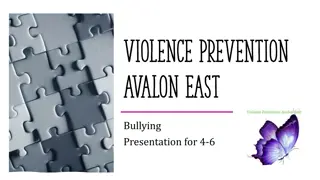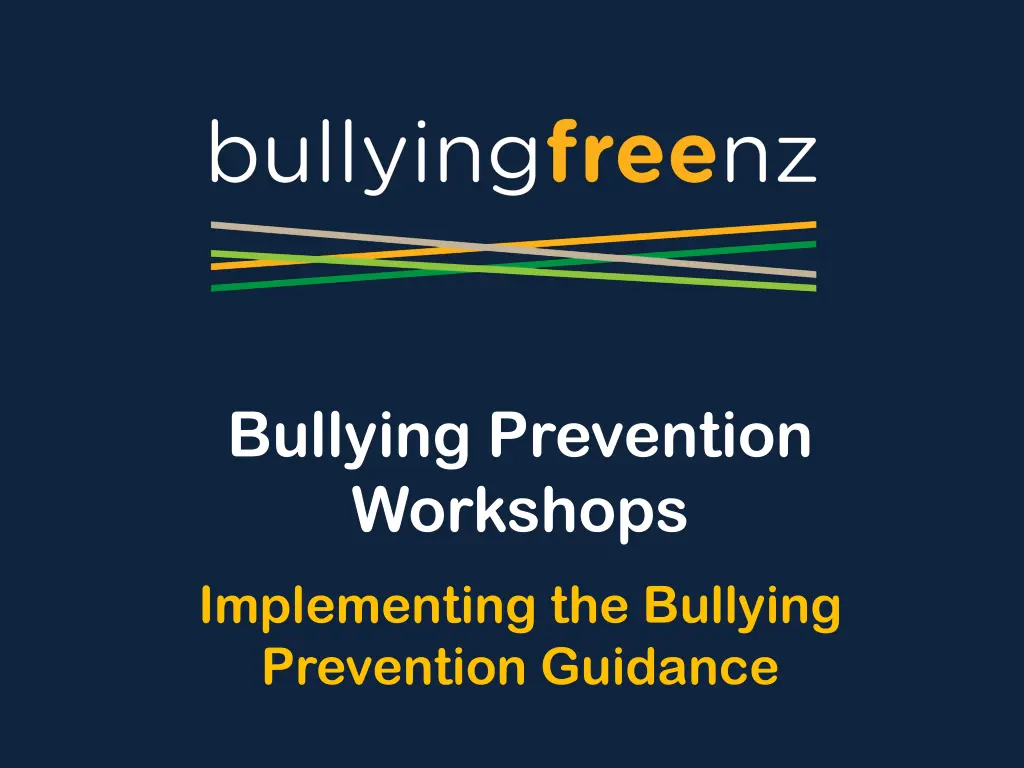
Implementing Bullying Prevention Guidance
Learn how to effectively prevent bullying through a series of workshops designed to support schools and educate parents on addressing and preventing bullying. Workshops cover school policies, intervention methods, and tips for parents to help children dealing with bullying incidents. Get valuable advice on identifying bullying behavior and supporting both targets and aggressors.
Download Presentation

Please find below an Image/Link to download the presentation.
The content on the website is provided AS IS for your information and personal use only. It may not be sold, licensed, or shared on other websites without obtaining consent from the author. If you encounter any issues during the download, it is possible that the publisher has removed the file from their server.
You are allowed to download the files provided on this website for personal or commercial use, subject to the condition that they are used lawfully. All files are the property of their respective owners.
The content on the website is provided AS IS for your information and personal use only. It may not be sold, licensed, or shared on other websites without obtaining consent from the author.
E N D
Presentation Transcript
Bullying Prevention Workshops Implementing the Bullying Prevention Guidance
Workshops overview The following slides are designed to support the delivery of professional development activities for schools through the 10 Bullying Prevention Workshops available on www.bullyingfreeNZ.co.nz The materials for each of the workshops will include information about which slides to use for each workshop. Trainer Slide
Working with parents and whanau There are three aspects to working with parents in relation to bullying. 1. Keep parents informed of the school policy including: the school s definition of bullying all the ways in which the school works to prevent bullying the school policy for responding to bullying Workshop 9
Working with parents and whanau 2. Including parents in interventions and problem solving, e.g.: Restorative practices Method of shared concern Workshop 9
Working with parents and whanau 3. Sign-post parents to other area of information and support, e.g.: NetSafe for concerns regarding digital use A clear complaints procedure showing how parents can speak to the Board of Trustees if necessary Workshop 9
Providing advice to parents and whanau Information schools could include for parents and carers who suspect a child may be a target of bullying: Stay calm. Work out how to deal with the situation together. Reassure the child they have done the right thing by talking about it. Reassure the child it s not their fault, Reassure the child that parents/carers will work with the school to make things better. Agree on a plan of support for the child. Regularly check in with the child to see how they are. Workshop 9
Providing advice to parents and whanau Information schools could include for parents and carers who suspect a child is bullying others: Talk to the child to get the full story and their point of view. Be clear about what is and is not acceptable behaviour at school and at home. Explain how bullying affects the target, the bystanders and the school environment. Discuss better ways to handle situations where the child may act aggressively. Regularly check in with the child to see how they are doing. Recognise and praise appropriate behaviour. Talk to the school and child s teacher about how they can help. Workshop 9
Providing advice to parents and whanau Information schools could include for parents and carers who suspect a child is a target of cyberbullying: Ask questions about how digital technology is being used. Take an active approach to discussing digital issues with their child. Not to access to technology as a sanction in response to being cyberbullied / cyberbullying. Save all bullying messages and images to use when reporting to the school or Police. Contact the Police if cyberbullying involves physical threats or could put the child in danger. Lodge a complaint with the mobile phone or social networking site provider. Contact NetSafe. Workshop 9

